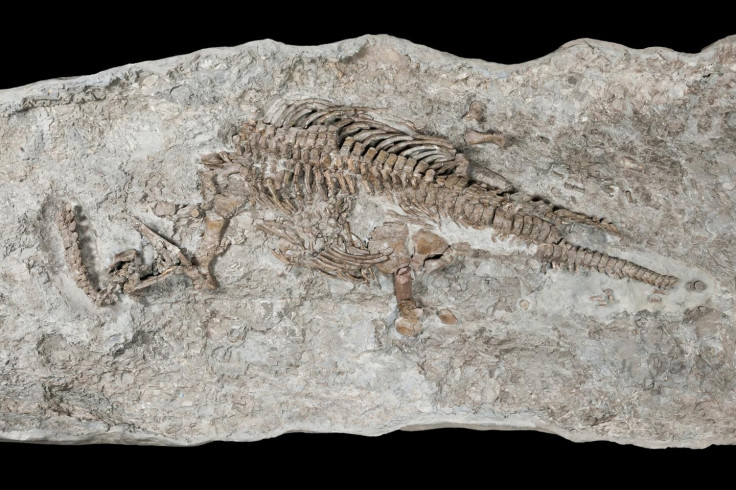Rhaeticosaurus mertensi: Skeleton of sea monster discovered from 201 million years ago
Marine reptiles roamed the oceans until being wiped out 66 million years ago.

The skeleton of an ancient marine reptile that lived 201 million years ago has been identified as the oldest plesiosaur ever discovered.
The remains of the creature were unearthed in a clay pit in Germany four years ago and acquired by a private collector. Recently, they were examined by researchers from the University of Bonn for a study published in the journal Science Advances.
The reconstructed skeleton measures 2.37 metres long, although part of the neck is missing. Its size makes it a relatively small plesiosaur.
The animal is the only one of its kind that researchers have found from the Triassic period – a time when the first dinosaurs began to appear.
"I could not believe that there was a plesiosaur from the Triassic, given that these animals had been studied by palaeontologists for nearly 300 years, and never was there one older than Jurassic" said Martin Sander of the University of Bonn.
Plesiosaurs were not dinosaurs, although the two animal groups co-existed for millions of years before they were wiped out near the end of the Cretaceous period, 66 million years ago.
The marine reptiles were especially strong swimmers, due to their long, streamlined bodies, small heads and powerful muscles and their ability to glide through the oceans using "underwater wings" – much like turtles and penguins.
"Compared to the other marine reptiles, the tail was short because it was only used for steering," said Sander. "This evolutionary design was very successful but curiously it did not evolve again after the extinction of the plesiosaurs."
After examining the fossil, the researchers concluded that Rhaeticosaurus mertensi - as the animal has been named – was an especially skilled swimmer, and would have grown extremely quickly before reaching sexual maturity.





















